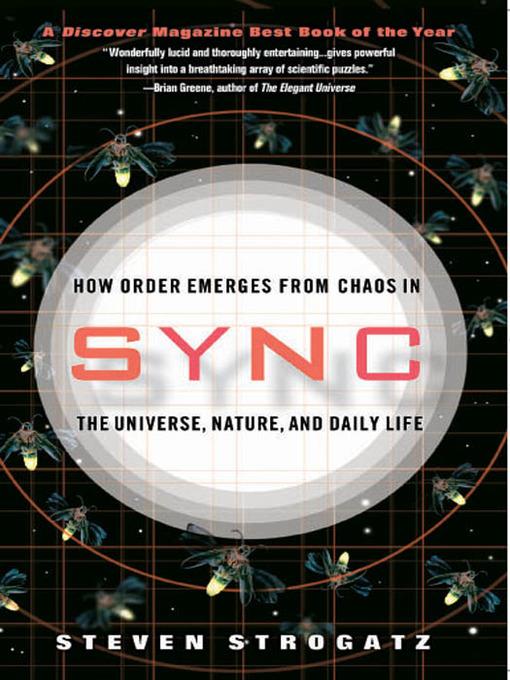
Sync
How Order Emerges From Chaos In the Universe, Nature, and Daily Life
کتاب های مرتبط
- اطلاعات
- نقد و بررسی
- دیدگاه کاربران
نقد و بررسی

Starred review from February 17, 2003
Strogatz is a Cornell mathematician and pioneer of the science of synchrony, which brings mathematics, physics and biology to bear on the mystery of how spontaneous order occurs at every level of the cosmos, from the nucleus on up. In this eminently accessible and entertaining book, Strogatz explores the mysterious synchrony achieved by fireflies that flash in unison by the thousands, and the question of what makes our own body clocks synchronize with night and day and even with one another. He explores the sync of inanimate objects, inadvertently discovered by Christiaan Huygens in 1665 when he observed that his two pendulum clocks would swing in unison when they were within a certain distance of each other. A case of spontaneous synchrony occurred on the 2000 opening of the Millennium footbridge in London when hundreds of pedestrians caused the bridge to undulate erratically as they unconsciously adjusted their pace to the bridge's swaying—it was closed two days later. Strogatz explores synchrony in chaos systems, at the quantum level, in small-world networks as exemplified by the parlor game "six degrees of Kevin Bacon" and in human behavior involving fads, mobs and the herd mentality of stock traders. The author traces how the isolated and often accidental discoveries of researchers are beginning to gel into the science of synchrony, and he amply illustrates how the laws of mathematics underlie the universe's uncanny capacity for spontaneous order. Agents, Katinka Matson and John Brockman. (Mar. 5)Forecast:Can order in the universe sell as well as
Chaos (by James Gleick)? Perhaps so—readers will find this a delightful excursion into science.

March 15, 2003
The nonlinear dynamics of complex systems has been a most hip career field in recent decades. Publishers like to tap its professional popularity for a general audience--James Glieck's " Chaos" (1987) precipitated a trend leading up to such recent offerings as Albert-Laszlo Barabasi's " Linked" (2002). Strogatz nods to both predecessors in his tour of synchrony, which simply means ordered behavior through time, for example, the beat of a heart. Living things' exhibition of synchrony called forth the field of mathematical biology, whose principal figures and ideas occupy the first part of Strogatz's book; the second part delves into synchronic behavior of inanimate matter, such as superconductivity. Writing accessibly for the nonmathematical, Strogatz explains how "coupled oscillators" are central to synchrony; presents their ubiquity, from fireflies to vehicular traffic; and accents the personalities who make synchrony a creative frontier of science (or who went over to the dark side--paranormal research--such as Nobelist Brian Josephson). With a personable narrative voice, Strogatz delivers the goods for followers of complexity theory.(Reprinted with permission of Booklist, copyright 2003, American Library Association.)

























دیدگاه کاربران